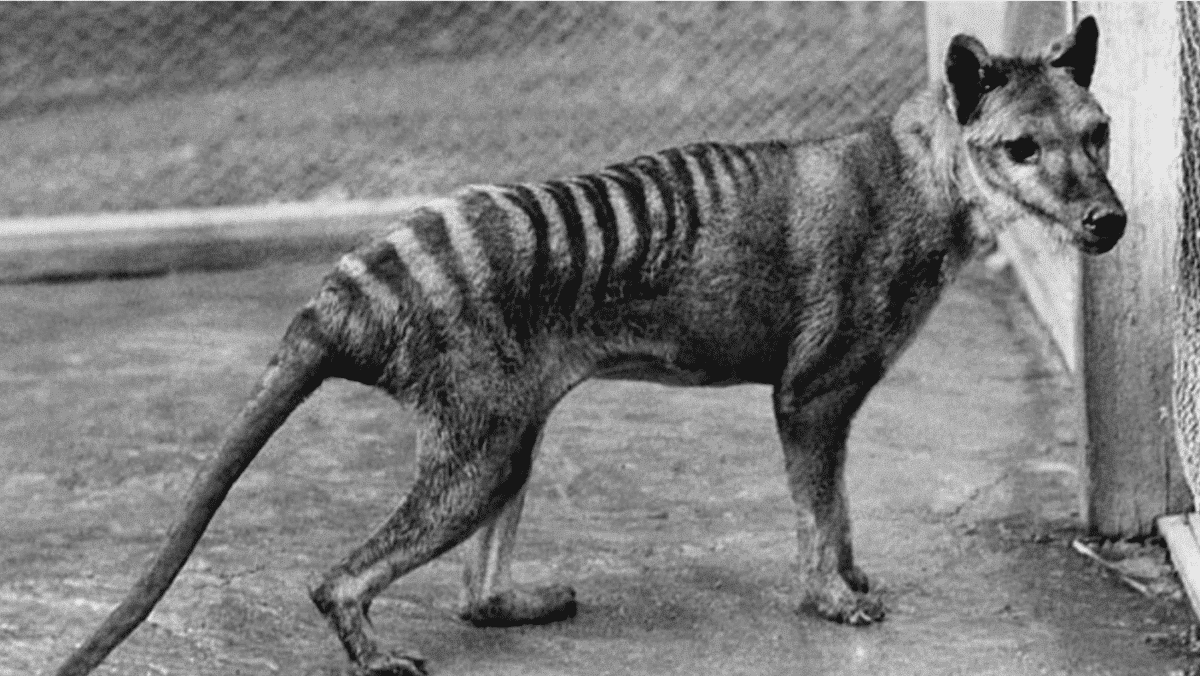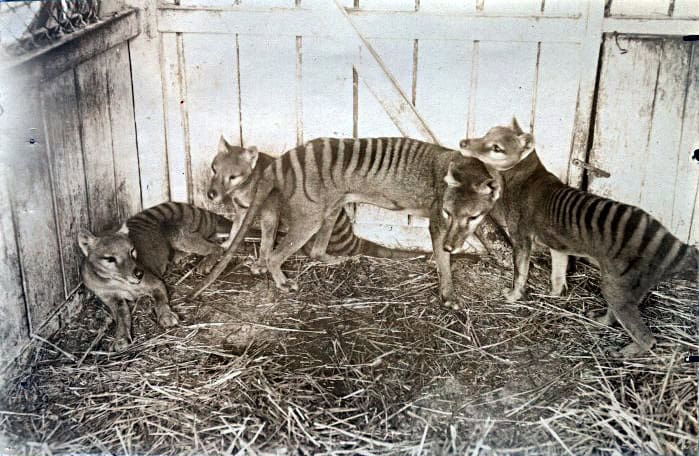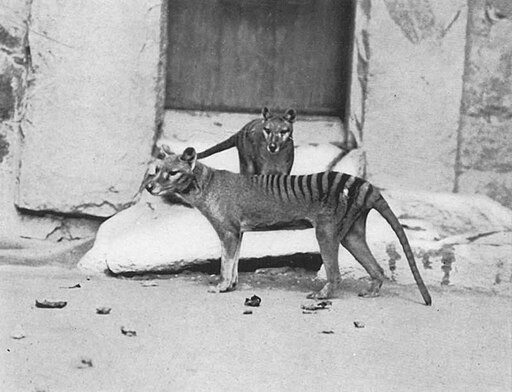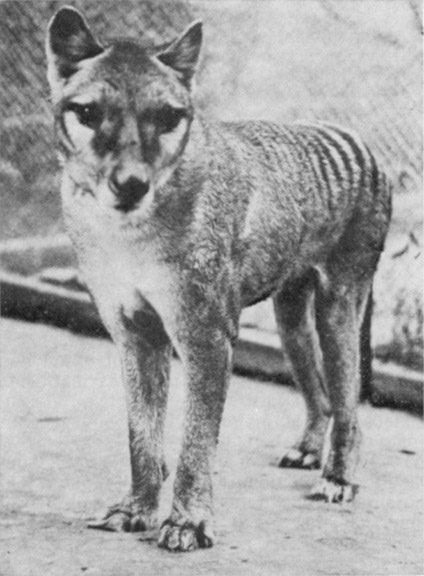The Thylacine, often referred to as the “Tasmanian Tiger” due to its distinctive striped lower back, was a unique carnivorous marsupial that once roamed the wild landscapes of Australia, Tasmania, and New Guinea. Despite its resemblance to a medium-sized dog with some feline features, the Thylacine (Thylacinus cynocephalus) was neither canine nor feline; it was a remarkable member of the marsupial family, which includes kangaroos and koalas. The Thylacine’s lineage is a testament to the incredible diversity of Australia’s native animal life, capturing the imagination of scientists and the general public alike.
Physical Characteristics and Behavior

The Thylacine was a formidable predator, measuring up to 180 centimeters (approximately 71 inches) from nose to tail and weighing around 30 kilograms (about 66 pounds). Its fur was short and coarse, primarily brownish-yellow with 15 to 20 prominent dark stripes across its back and rump, which inspired its “tiger” nickname. Unlike most marsupials, the Thylacine was unique in possessing a pouch in both sexes; females used theirs for nurturing young, while males had a less developed pouch-like skin fold.
Thylacines were primarily nocturnal and crepuscular, hunting for food during twilight and night hours. They had a varied diet that included kangaroos, small mammals, and birds. Due to their solitary or paired hunting habits, they relied on their agility and stamina to ambush prey, often covering large areas during their nightly forays.
Historical Range and Extinction

Fossil evidence indicates that Thylacines once roamed across mainland Australia and New Guinea. However, their range gradually diminished over thousands of years, primarily due to competition with dingoes and human-induced habitat changes. By the time European settlers arrived, the Thylacine’s presence was largely confined to the island of Tasmania.
The arrival of Europeans marked the beginning of the Thylacine’s decline. Farmers viewed them as a threat to livestock, particularly sheep, and systematic bounties were offered for their capture and killing—a factor that significantly contributed to their rapid decline. However, habitat destruction and diseases introduced by domesticated animals were also contributing factors.
Officially, the last known Thylacine died in captivity at the Hobart Zoo in 1936. Since then, there have been numerous unconfirmed sightings, fostering the legend and intrigue surrounding this species’ possible survival in isolated pockets of Tasmania. Despite these reports, no conclusive evidence has emerged to prove the existence of Thylacines beyond the 20th century.
The Thylacine in Culture and Science

The Thylacine holds a significant place in Australian cultural heritage. Its appealing, enigmatic look, coupled with its tragic history, has made it a potent symbol for conservation efforts and the discussion around human impacts on ecosystems. In art and literature, it’s often portrayed as a haunting reminder of what has been lost to human progress and environmental neglect.
Scientifically, the Thylacine has become a focus for de-extinction discussions. Recent advances in genetic research, particularly efforts to sequence Thylacine DNA from preserved specimens, have spurred interest in the possibility of resurrecting the species using advanced reproductive technologies. While practical and ethical concerns challenge these endeavors, they show a growing commitment to leveraging science for conservation purposes.
Lessons in Conservation

The story of the Thylacine’s extinction is a cautionary tale about the effects of unchecked human activity on wildlife. It underscores the importance of safeguarding biodiversity and the need for robust conservation measures to protect vulnerable species from similar fates. The loss of the Thylacine has informed modern conservation strategies, emphasizing habitat preservation, the control of invasive species, and targeted protection programs.
Conclusion

The Thylacine, or Tasmanian Tiger, remains an enthralling figure in the saga of Earth’s rich biodiversity. Although it no longer prowls the wilderness, its story serves as a powerful reminder of the delicate balance between humans and nature. By studying and remembering the Thylacine, we gain insight into the urgent need to protect other species from extinction, honoring what remains of the natural world while preventing further losses.
- The Most Venomous Snake in North America—And Where It Lives - August 23, 2025
- The Smartest Animal on the Planet Isn’t What You Think - August 23, 2025
- Why Some US National Parks Are More Dangerous Than You Think - August 23, 2025

